You’re sitting by the gate at the airport, watching the clock tick closer to your flight’s boarding time. Suddenly, there’s a *ding* overhead as the PA system comes on. Your stress levels rise. You know what’s coming. “Sorry folks, but departure has been delayed by an hour due to [insert any one of a million reasons / excuses here].”
In the airline world, on-time performance is hard. Airplanes are complex, ground operations are a logistical nightmare, and weather can wreak havoc on even the best-managed carriers. Given all those factors, it’s sometimes surprising how many flights still do leave on time. Most airlines rise and fall in the Department of Transportation’s on-time performance rankings. But over the past fifteen years, one U.S. carrier has kept an iron grip on the top position: Hawaiian Airlines.
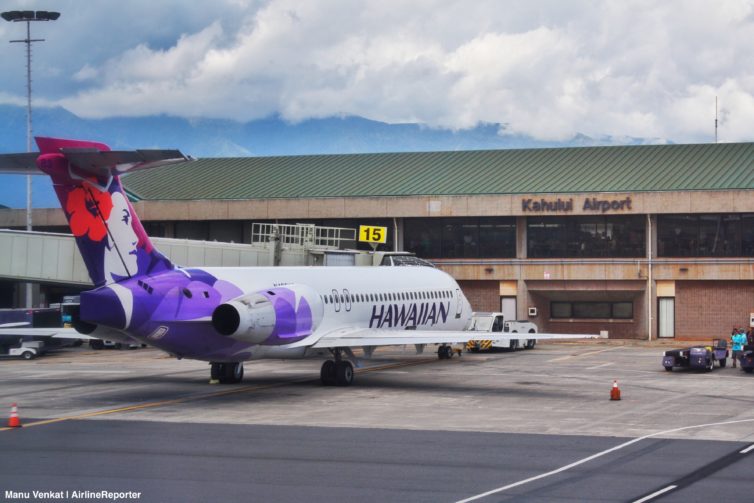
We just wrote about our flight from Oakland to Maui on one of the airline’s new Airbus A321neos. After landing, we sat down with Hawaiian’s Head of Neighbor Island Operations Pat Rosa, who discussed what goes into Hawaiian’s on-time performance. Sure, Hawaii’s lack of snowstorms helps (though the islands still deal with their share of bad weather). But there’s plenty more ingredients that go into Hawaiian’s secret sauce for punctuality. Pat also talked about the unique culture within the islands’ home airline, his love for the new A321neo fleet, and his excitement for the airline’s Boeing 787 order.
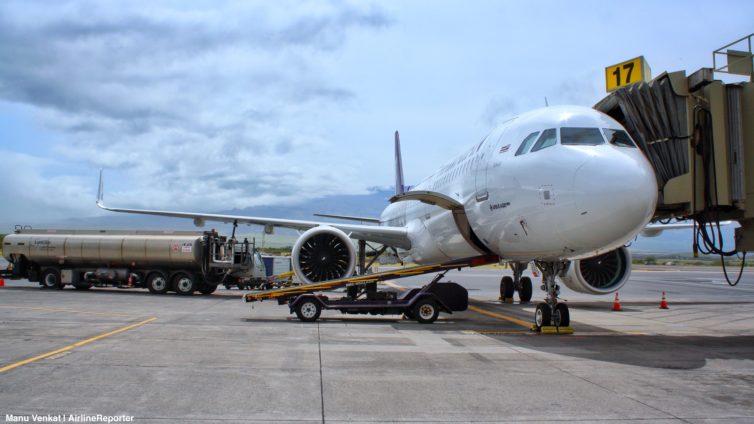
If you love behind-the-scenes looks at airlines you definitely don’t want to miss this one, so read on!
Pat and I sat down in the airline’s training room for its Kahului employees. We were joined by Tara Shimooka, a communications specialist with the airline.
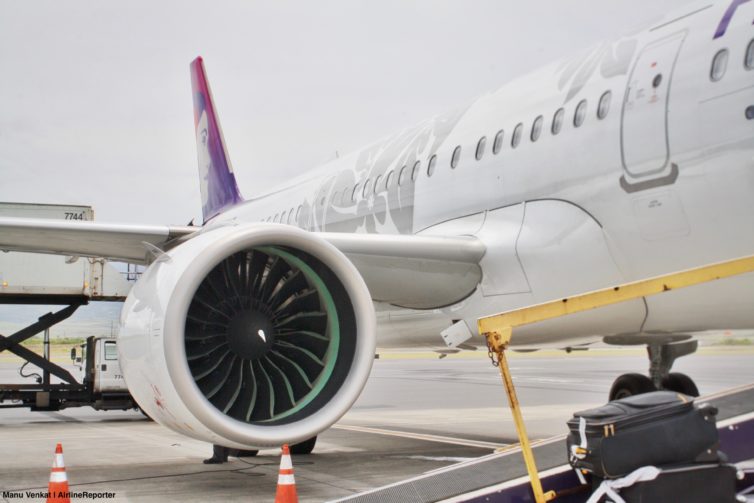
Q: Thank you so much for taking the time to speak with us, Pat. And congratulations to you and your team on being America’s most on-time airline for another year! To start, tell us a little about how you came to work at Hawaiian Airlines.
Pat: I started in this business in 1985. I was actually on the ramp here as a baggage guy. Then I got into maintenance and worked in that field for a while. It’s been over 30 years that I’ve worked in airport operations. Prior to joining Hawaiian I was an aviation consultant, consulting for Hawaiian. They reached out to me and said, ’œHey we have a gig for you in Maui! We need some help building our hub there.” I said ’œYeah, sure!” That was two and a half years ago and I’ve been here ever since.
BONUS: The Fascinating and Turbulent State of Hawaii’s Airlines (2014)
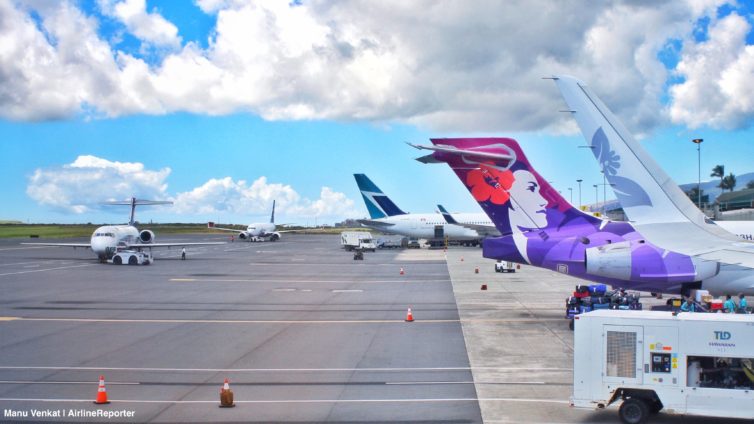
Q: What does your day-to-day look like as Head of Neighbor Island Operations?
Pat: First thing in the morning, we prepare the team and communicate any updates. On-time performance is a big focus for us, but safety is the most important. So we always start out with that by talking about safety and taking care of each other, and then we begin our operational day. Throughout the day there are always challenges that come up, like delays or maybe even cancellations. But we have a strong and experienced team that knows how to handle those problems. We have a bunch of team members who have been here for a while, and they are veterans of this operation. We have one guy here who has been an employee for 54 years now.
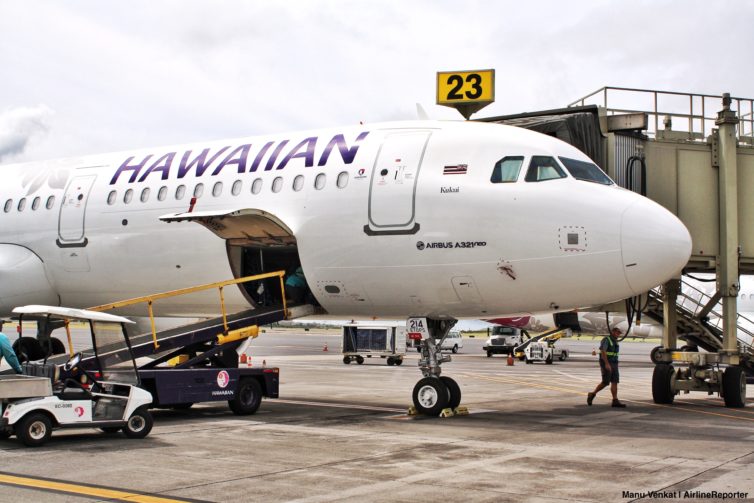
Q: What are the ingredients that go into Hawaiian’s on-time performance?
Pat: Communication is one of the biggest things. We ensure the team knows what the shared goals and vision are. Most employees understand them, but it’s only once we actually apply them that we fully grasp them. Most of our employees here welcome the communication, and sometimes they reply to our ideas with tough talk too. Sometimes they’ll say ’œhere’s why this may not work.’ But we work through those things.
BONUS: Oh Snow! Rare Multi-Day Snowstorm Makes for Busy Ops at Sea-Tac Airport
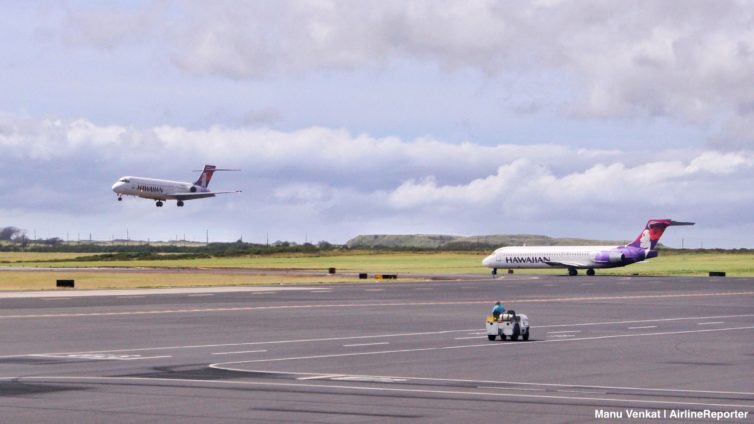
Q: Each year when the on-time performance statistics come out and Hawaiian is on top, does your team celebrate?
Tara: We’re the biggest airline based in Hawaii but when you compare us to airlines like American, United, and Delta, we’re much smaller. As we continue to grow, while we do celebrate the milestones and achievements, mostly it’s a “go! go! go!” mentality.
Pat: Our airline, like Hawaii itself, is very Asian influenced. Culturally, I think we’re very humble. We don’t always raise the flag and say ’œHey look at me, we’re doing better than the other guy!” For us it’s about doing the best job we can, which is the most fulfilling thing for our employees.
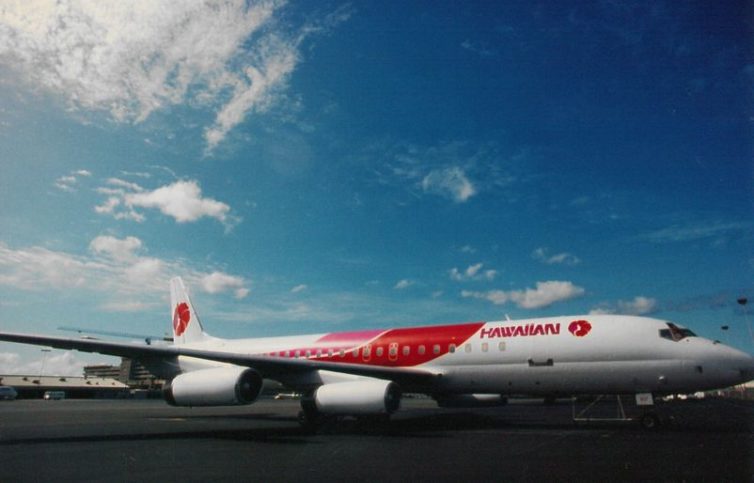
A Hawaiian Airlines DC-8 from the 1980s – Photo: Hawaiian Airlines
Q: People in the contiguous 48 states probably think of snowstorms when they think of weather-related flight delays. Snowstorms aren’t a problem here in Hawaii. What are some of the weather events or other external factors that your team does have to deal with here on the islands?
Pat: The most recent events I’ve seen here are hurricanes. Last year we had five or six that came through the region. They all missed Hawaii but one came very close and we had to prepare to shut down completely. There was so much preparation. We were in close touch with our central operations center in O’ahu to get updates about where the storm was. We were thinking about how we might reroute airplanes and how we would deal with diversions. We were calling in overtime. We had people who couldn’t get to work because of fallen trees and downed power lines across the roads. It was a challenging time, but we were very transparent about communicating what was going on to our customers.
BONUS: Ice, Ice Baby – Winter Operations at Iceland’s Keflavik Airport
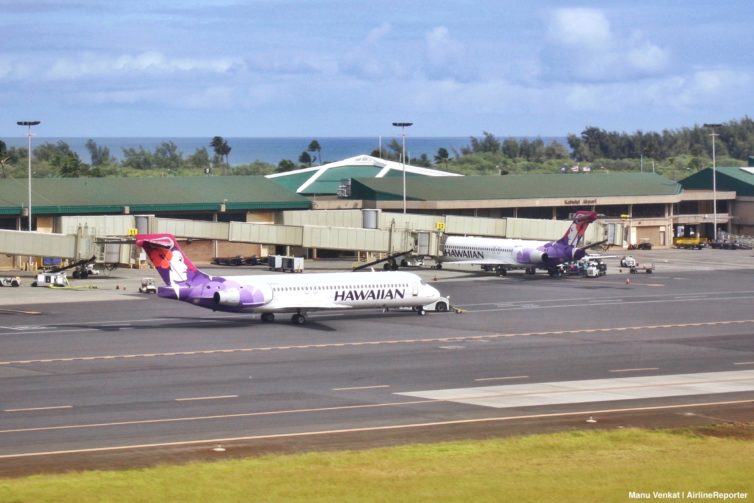
Q: So if a hurricane or major storm hit the island, what would happen to the aircraft to keep them safe?
Pat: It depends on the severity of the storm. In the case of the recent hurricane that we thought would come right across the island, we were preparing to reposition our planes on the farthest islands to the north. And as the hurricane came through we would have flown the planes off of those islands, around the hurricane, and to the islands in the south. Our widebody aircraft could transition to the mainland. We had all of that planned, but fortunately we didn’t need to execute that plan.
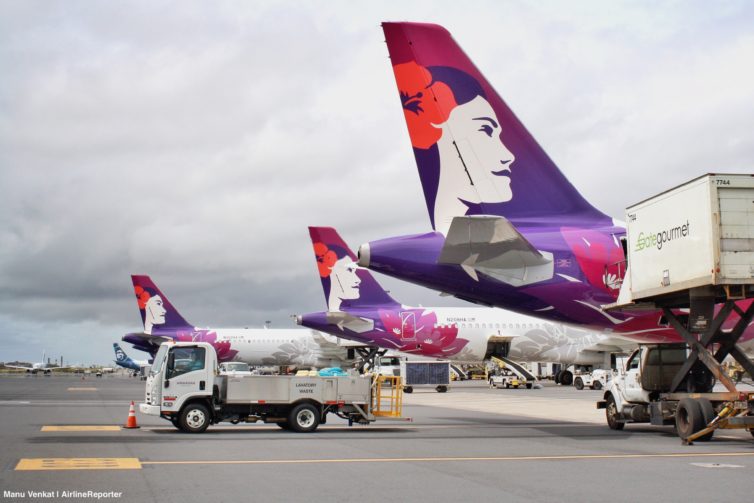
Q: Does aircraft maintenance mostly happen in Honolulu?
Pat: Yes, all major overnight aircraft maintenance work happens in Honolulu. But every flight to the West Coast needs needs maintenance before every flight because of ETOPS. So we have a large maintenance team here in Maui to check the essential systems required for extended over-water flights.
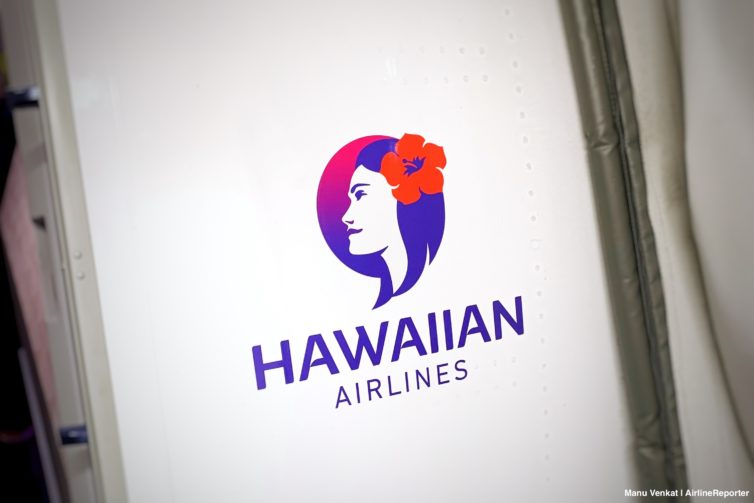
Q: What’s something about Hawaiian’s operations that the general public may not know but might find interesting?
Pat: Well most people don’t know that Maui is the airline’s number-two hub. We have over 700 employees here in Maui.
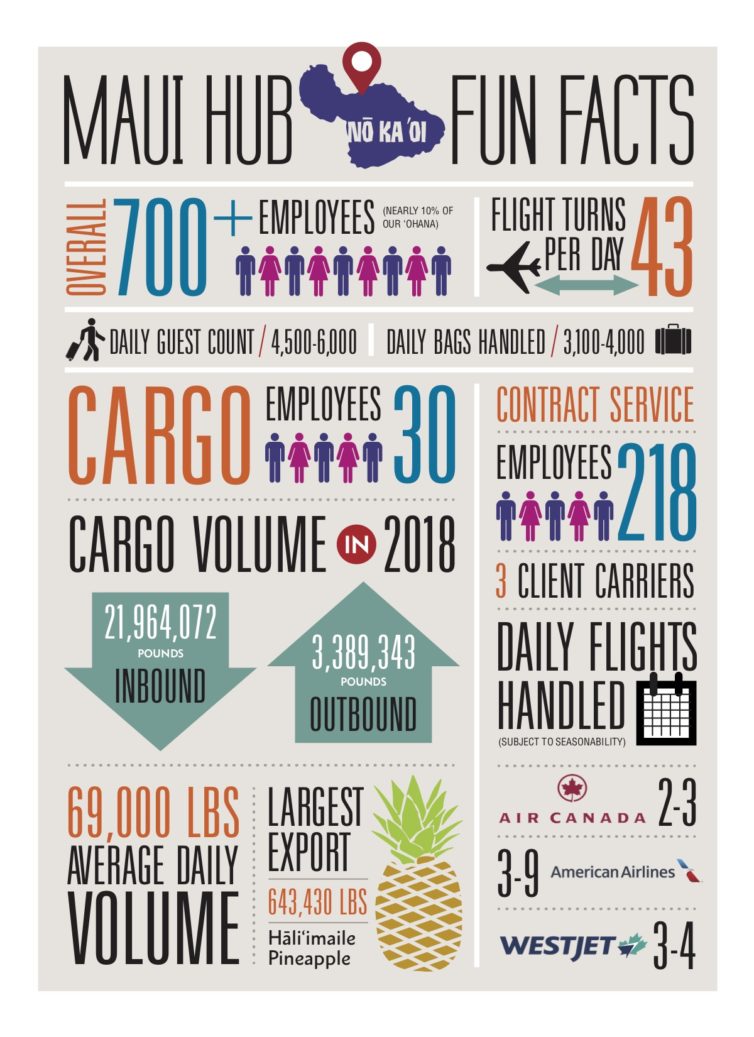
Fast facts on Hawaiian Airlines’ Maui operations — Source: Hawaiian Airlines
Tara: The A321s have allowed us to expand our operation here in Maui. Honolulu used to be where everyone flew into. There’s a big modernization of that airport and a lot of international travelers in and out of that airport. The A321neo has allowed us to open up direct routes from the West Coast to the neighbor islands like Maui. It’s important because our largest market into Maui is the U.S. West Coast. They love Maui and they’re repeat visitors. The A321neo has allowed us to bring in more people from the West Coast directly into Maui. With that, there’s been a big expansion here at this airport. Five to ten years ago it was a small operation, but now we’re growing, with over 700 employees, 6,000 visitors daily, and 4,000 bags daily.

Hawaiian’s direct flights to the West Coast from Maui — Source: gcmap.com
Q: I flew in on one of the new Airbus A321neo aircraft. From an operational perspective, how has it been working with that new plane?
Pat: The A321neo is one of the most fuel efficient planes in the industry. It’s an engineering success, but also the mechanics who turn the planes around do less because these planes are so much more reliable than older planes like our retired 767s. Even our employees who board and service the plane say that their work is much faster. When we initially brought the A321neo in, there was a huge learning curve. We have an 80-minute standard turn time for long-haul flights, which is pretty fast by industry standards. All the cleaning, offloading, onloading, and catering has to happen during that time. The biggest challenge was taking a high-capacity narrow-body and spinning it around very fast. When we first started with the plane we gave ourselves longer 90-minute turn times as we perfected the turn with the new plane. But now we’re pretty consistent with the 80-minute turn.
BONUS: An Academic Look Into Airline Scheduling
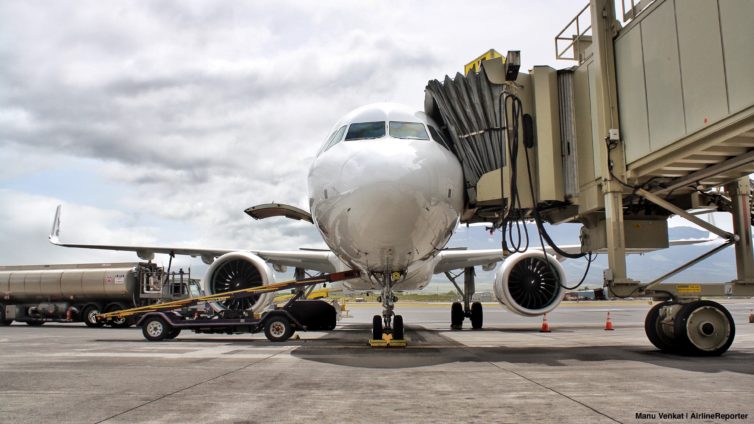
Q: Do you sometimes miss the 767 now that it has left the fleet?
Pat: The 767 was a great airplane. For us, though, it was time for a newer, more reliable, more fuel-efficient airframe. I think taking on the A321neos was the best business decision the company has made in the time that I’ve worked here.
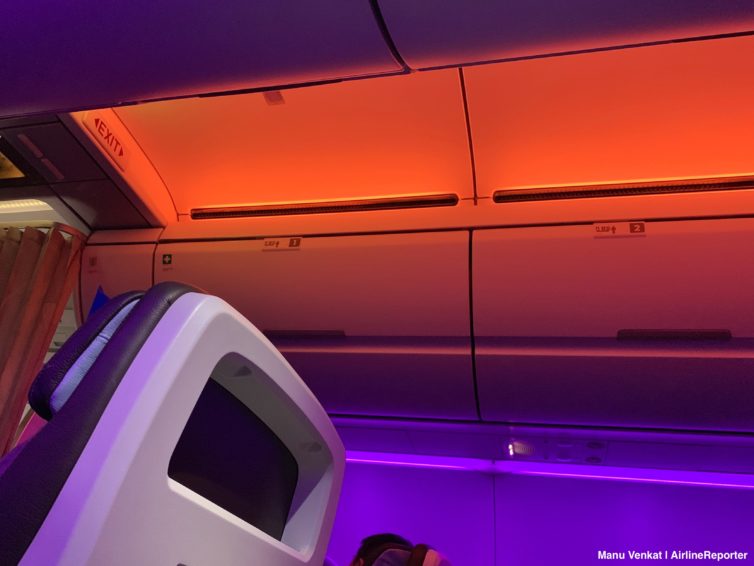
Tara: We hope our passengers get a sense of Hawaii while they’re on the plane, from the drinks and cocktails we have available to touches like the coconut soap in the bathroom. We share that Hawaiian hospitality with our guests. We want it to be like we are inviting people into our home, giving them some of our food, and helping them relax.
Pat: Our passengers will never meet or see our people on the ground, but our ramp team really sees the bag that they have as being so important. They take pride in making sure the bag gets to where it needs to go. A year ago we implemented bag scanning. We had perfected our process for getting a bag from the front counter to an airplane’s belly. But with bag scanning we proved that we could really make that complex system work.
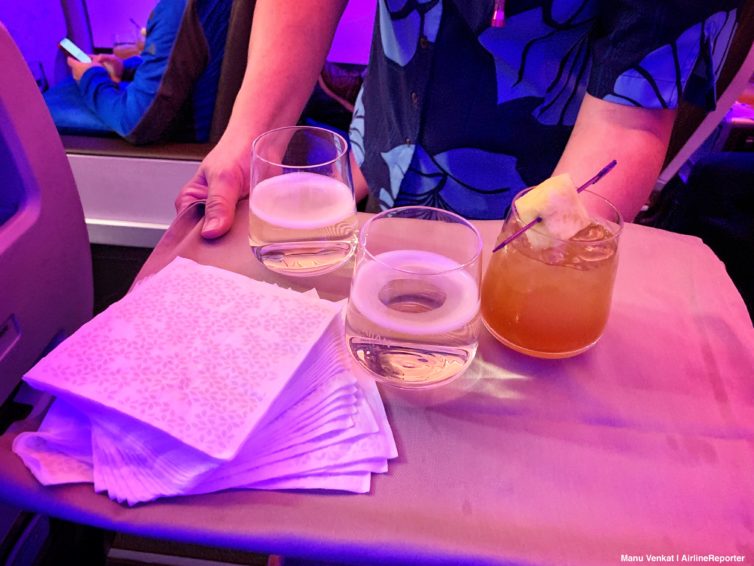
Q: Tell me more about the culture and spirit of the people who work at the airline.
Pat: We don’t typically celebrate as individuals when we have successes. We celebrate as a whole team when the team does well. And as you’ll see when you spend time in Hawaii, we love to celebrate with good food.
Tara: The airline has been in service for 89 years and November will kick off our 90th year. We’ve started celebrating by getting out into the community a lot. We recently had an employee volunteer program to encourage employees to donate to local charities. We matched up to $90,000, since we were celebrating our upcoming 90th anniversary. We met and exceeded that goal, and so we had a big party for the employees. I think we are a little different in our relationship to the community here than most other airlines, since 90% of our workforce is here on the islands.
Q: Hawaii is very in tune with, and sensitive to, changes in the environment and climate. Other than investing in the fuel efficient A321neo, are there any other efforts the airline is making to promote sustainability in its operations?
Tara: We’ve partnered with a company called IAGOS that attached a climate monitoring system to our A330s. We’re the first US airline to do that. Because of our unique positioning in the Pacific, we can track weather events and send results back to IAGOS. We also work to lower APU usage at gates. We have an employee resource and sustainability group, which is constantly meeting to discuss ways to improve our sustainability. We also know that we bring a lot of tourists to Hawaii, and that it is our responsibility to educate them not just on our culture, but also about the land and resources they will be experiencing while they’re here. We do a lot of ecotourism initiatives to bring people here and set them up with nonprofits to teach them about the land. We partner with reef-safe sunscreen programs. On our inflight entertainment systems we have a lot of programming on water safety and how to be a responsible tourist. We want people to enjoy Hawaii but to enjoy it responsibly. We live here. This is our home. Sustainability is very important to us.
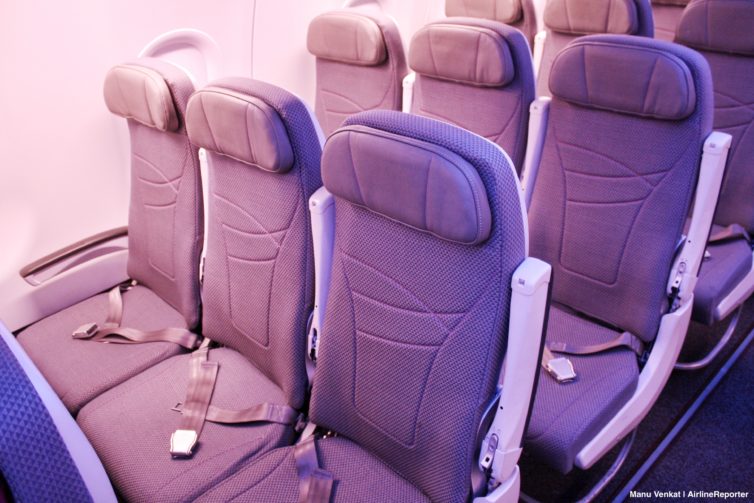
BONUS: Southwest Airlines Says Aloha As It Launches Flights to Hawaii
Q: What is your favorite aircraft, past or present?
Pat: For me it’s the 787, which we announced recently that we are ordering. It’s 70% carbon fiber, which is amazing. It’s really fuel efficient. It no longer uses the engine to pressurize the cabin. It uses air pumps instead to get to higher air pressure, which will help with jetlag. Personally, I’m a Boeing guy. I worked on them myself, and so I do love Boeing airplanes. Sometimes I feel like I should turn in the pen and go back to working on the airplanes myself.
Well thanks for sitting down and speaking with us, Pat. It was a pleasure!
Now it’s time for us to hear from you. Share your thoughts in the comments section below.
We were stuck flying Hawaiian Airlines until Southwest came in. You can sit and look out your boarding pass being changed time after time or gate change becase of delays. They were jacking up prices up to $325 a head round Trip to all of a sudden Drop it to a $100 a head inter island Because Of competition. Change fees often cost more than the actual flight and all they can say is oh well. . The people who suffer are the locals.